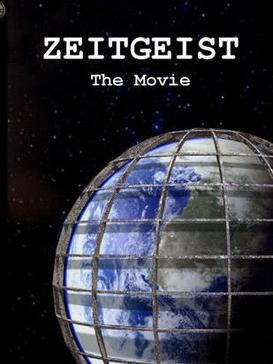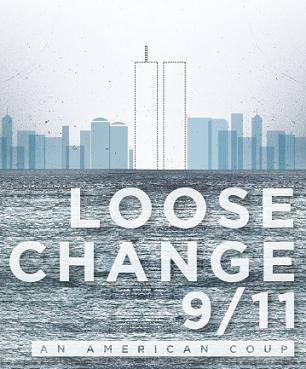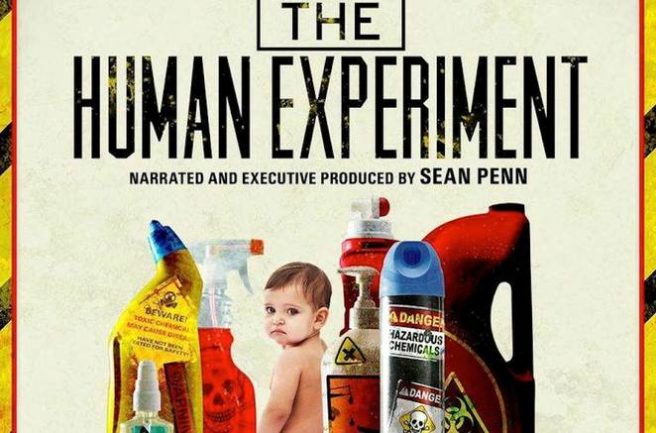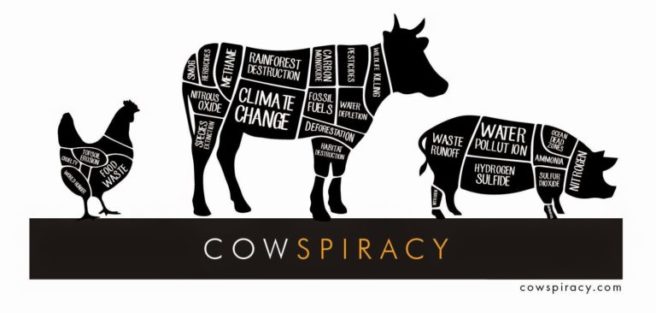Netflix and Conspiracy Theory Movies…
It cannot be disputed that there has been an increase in the number of conspiracy documentaries produced in the last decade. Some of these documentaries are chilling, and the line between fact and conspiracy becomes more and more blurred, as fringe theories gradually make their way to the center, then to the fact that as taken for granted. Five of the most profound and somewhat frightening best conspiracy movies on Netflix are investigated below.
Best Conspiracy Movies on Netflix
1. Zeitgeist: The Movie

The grandfather of all conspiracy movies. Zeitgeist part One was released in 2007. It was the first mainstream movie which brought all the conspiracy theories together in one movie, bringing it to public attention. It is a three part documentary of movies made between 2007 and 2011. Zeitgeist: The Movie is divided into three sections. The first part alleges that the Christian religion is mainly a myth, a tool used by the elites to keep the masses suppressed and the mighty in power. Parallels can possibly be drawn to the Da Vinci Code movie where the real truth of religious history has been drastically altered from what actually happened. Part II contends that the September 11 attacks were a false flag operation instigated by the U.S government. It cites evidence with regard to the way the twin towers collapses and points out a number of inconsistencies in relation to the official story. Part III involves a theory that forms a core part of most conspiracy theorists beliefs. The idea that there is an international cabal of elite financiers who pull the strings of all apparently influential players. These groups and individuals would have complete control and dominion while by and large appearing to remain in the shadows. These groups include the Trilateral Commission, the Bilderbergers, the Federal Reserve, the Rockefellers and the Rothschilds. They have steadily gained power over decades and plan to instigate a New World Order (NWO). The NWO would have one government, one banking system, one set of rules and one currency. And all the decisions would be made by the same elites who pull all the strings. Part III of the movie further claims that the federal income tax is illegal and that Illuminati symbolism is seen everywhere, including popular media and the U.S currency, as well as a plan to form a North American Union between the U.S, Canada, and Mexico. The film further outlines plans to implant RFID chips into all citizens so they could be monitored. The film received typical mainstream criticism, with fringe endorsements. Alex Jones says that he supports 90% of the movie while Jane Chapman said the movie was deceitful, comically self-defeating and used twisted evidence, slandering the media while using articles from the press to back up its own claims. Jay Kinney described it as follows:
Zeitgeist engages in willful confusion by showing TV screen shots of network or cable news with voice-overs from unidentified people not associated with the news programs. If one weren’t paying close attention, the effect would be to confer the status and authority of TV news upon the words being spoken. Even when quotes or sound bites are attributed to a source, there’s no way to tell if they are quoted correctly or in context.
2. The Imposter

The imposter is not strictly a conspiracy movie. It is a chilling documentary about a French trickster who successfully impersonated a missing Texan child, taking the family in. The film includes footage of interviews with the trickster himself, Frederic Bourdin. Bourdin has a long-standing history of impersonating missing children. Bourdin claimed to be Nicholas Barclay, stating he had been kidnapped for purposes of sexual abuse. He was accepted by Barclay’s family members, though he was actually Seven years older than Barclay. This worked because of the parent’s desperate need for the child to be found, and as Bourdin elaborates, people will believe what they want to believe. He just provides an outlet. He also spoke with a French accent and had different hair and eye color than Barclay. It was not just the family who fell for his tricks. Barclay also managed to fool a number of officials in America and Spain. Barclay was eventually revealed for what he was through the efforts of an FBI agent and a private investigator. Director Layton said that Bourdin:
invites sympathy. He has this childlike quality about him, and he can be very charming. And at other times he can be quite repellent, because he can be remorseless and you’re reminded about what he did. So as a filmmaker, I was asking, How can I find a way of getting the audience to experience a bit of that?
Not a conspiracy movie, this documentary received huge critical acclaim. It was loved by both audience members and critics, a tell-tale sign of a high-quality piece of work. It won and was nominated for numerous awards. A must watch movie about real events.
3. Loose Change

Loose Change is a collection of films released from 2005-2009. The series argues in favor of certain conspiracy theories surrounding the September 11 attacks. The third and final version was released in November 2007. The first edition was released in 2005 and was available for free on the internet. It only cost $2000 to make. The main point of Loose Change is that the official version of events from the Pentagon simply does not add up, a point which more and more people are beginning to question. Conspiracy theories aside the official version leave many questions unanswered when examined rationally. Many of the claims made in the movie are held to have been debunked by independent research and independent journalists. One of the producers, Rowe, was reported in an article to have said that there was an inaccuracy in the documentary, namely that a B-52 flew into the Empire state building. He stated:
We don’t ever come out and say that everything we say is 100 percent. We know there are errors in the documentary, and we’ve actually left them in there so that people discredit us and do the research for themselves
The movie is endorsed by Charlie Sheen and entrepreneur Mark Cuban, who was going to distribute it initially. Loose Change is an excellent documentary which raises many questions. However, this seems to be a common trend among many such conspiracy theory documentaries. They accurately raise questions but simply don’t do enough to prove the official version is false. As Alex Jones often states, he is just asking questions. However, the questions asked are asked to elicit a particular thought pattern, a line of thought that does not have much to do with substantiated, real events. Thus while the theorists may state that the public are being deliberately misled, some of the tactics used are not much better than outright propaganda. The selective evidence is utilized in a particular context to elicit a deliberate response from the consumer. It is not sufficient to simply release an inaccurate documentary, as Loose Change admittedly is by Rowe, and then say that they never claimed to be telling the truth. We just want to get people thinking. It does seem to be the definition of irresponsible journalism. Despite this, it is worth a watch as it highlights the loose ends of the Pentagon’s story which need to be addressed.
4. The Human Experiment

The human experiment is a documentary produced in 2013 by Sean Penn. The film explores the presence of household chemicals and how they can seep into the human organism. The documentary reports that the Environmental Protection Agency (EPA) has tested and published data on only approximately 200 of the roughly 83,000 chemicals legally used to make products in the U.S., according to a California Senate review from 2010. Meanwhile, food manufacturers can put thousands of additives into their products without approval from the Food and Drug Administration (FDA) because of a loophole in a decades-old food additive law, the Center for Public Integrity reported. And all this is alleged to be a vast human experiment as per the documentary.
The Human Experiment outlines the effect that chemicals have and how the chemical industry marketed the same chemicals as safe and effective. The ethos that chemicals are safe until proven otherwise has had disastrous consequences. The chemical regulatory framework is beyond broken and in dire need of replacing or a complete overhaul, as opposed to a fixing. Breast cancer, autism, and depression are all up, and while this could be for a variety of reasons chemicals are one of the leading suspected perpetrators. The main issues is that we simply do not know the effects of these chemicals which have only been introduced in recent decades. Too many chemicals are being introduced too quickly that it is impossible to track and monitor, particularly when there are chemical corporations manipulating studies and aggressively lobbying. The documentary highlights how advertising agencies have misled the masses about the ease of using plastic dishes and flame retardant chemicals. It showed how the American Chemistry council funded bogus studies and the amount of money spent by the chemical lobbying industry.
Sean Penn alleges a correlation between cancer, miscarriage, autism, and congenital disabilities with a rise in untested chemicals. The documentary makes good use of well-respected legal and academic experts. The documentary cites some very authoritative studies and represents a good blend of a realistic, worrying scenario with scientific evidence. However, like most of these theories, a causal link cannot be established between the general “increase in chemicals” and an increase in health problems. The health problems could be just as easy but from a myriad of other factors including environmental toxins, genetics or the food and water supply. There are too many variables, and a causal link must be established. A precise definition of what constitutes a chemical is never given. Which further muddies the water. The film examines chemicals such as Bisphenol A (BPA), implying that it could be a factor in infertility and congenital disabilities. It then proceeds to investigate human interest stories of people who face birth defects and miscarriages. As tragic as this is it is misleading to imply a link between BPA and these events because no connection has been established. Other chemicals investigated include BHA and PVC.
The documentary follows the standard and ever increasing controversial documentary with the same pitfalls as many other conspiracy documentaries. It outlines the politics and corruption of the underlying industries, in this case, the chemical corporations and agencies. It outlines an increase in the number of health issues and implies a link between the health problems and rise in chemicals. But it does not prove a link, and it does no propose a viable alternative. It is quite an interesting documentary and worth a watch. It definitely generates awareness on the issue. However, there are many questions which remain unanswered.
5. Cowspiracy: The Sustainability Secret

Cowspiracy: The Sustainability Secret is a documentary worth watching. Cowspiracy is a crowd funded U.S documentary produced by Kip Andersen and Keegan Kuhn. A newer version was released on Netflix which was executive produced by Leonardo DiCaprio, which boosted its rankings. The film has a huge, almost cult-like following. The documentary details the impact the livestock industry has on climate change. Among scientists, there is a common consensus that fossil fuels are the leading cause of climate change. Cowspiracy: The Sustainability Secret holds that Methane and Nitrous Oxide, two Greenhouse Gases, contribute more of an effect on the environment than traditionally thought, as opposed to Carbon Dioxide. However, this claim does not hold up. The claims are backed up by science; it’s just that they are phrased in a misleading way, or they are used out of context. And they used a study which is now out of date to back up the main claim of the documentary, that 51% of global warming is caused by livestock and its by-products. This is not the case, and the vast majority of earth scientists are convinced that Carbon Dioxide is the leading Greenhouse gas in terms of global warming. The most authoritative study shows that livestock and its by-products account for 15% of total emissions, not 51%. Thus the central claim of the movie is not true which significantly undermines its credibility. While methane and Nitrous Oxide may be far more potent, as outlined in the movie, they do not exist in sufficient quantities to have a correlation with the rapid speeding up of the earth’s atmosphere. Further, Anderson’s claim that it takes 2500 gallons of water to produce one pound of beef does seem slightly preposterous when the numbers are tallied up. It is not explained in the documentary, merely stated as fact. And with regard to the manure levels, as long as an appropriate amount of cattle are kept on an appropriate amount of land there will be no problem. The concentrated animal feeding operations are the problem, not the manure itself, cited as an issue contributing to global warming. This is a system problem, not the fault of the eating of beef. As One online Californian rancher stated:
“The film fails to address, misrepresents, or glosses over any number of interesting points. At the backyard duck farm Anderson does some math and decides that it has a 100 to 1 feed to meat ratio, which is so obviously impossible that it suggests he simply doesn’t consider the roughly 500 eggs the duck likely produced during its life to be food. He says that 45% of the earth’s land is used for livestock production, even though the best information I can find puts the global total at about 40% for all agriculture. He dismisses any discussion of Allan Savory’s claims about managed grazing both improving degraded land and sequestering carbon by getting off a pithy line about the silliness of using livestock to reverse damage caused by livestock… He’s outraged that the BLM rounds up wild horses and burros to make way for cattle, despite the fact that all three are European imports. He blames livestock production for the continued existence of hunger but doesn’t discuss the surplus of calories already produced or the systemic factors that prevent food from going where it is most needed”
Other claims made are more enlightening. That growing alfalfa grass on irrigated land in the desert is an absurd waste of water, particularly in California.The film further contends that organizations such as Greenpeace are actually allied with the meat industry. This is where the conspiracy part of cowspiracy comes into play, the alleged collusion between the government, environmental organizations and the meat industry. This may have been overplayed a little, and it is unlikely that it accurately reflects the reality.
The movie did have quite an effect on audience’s worldwide and is very well put together. It also does much to generate awareness for animal cruelty, which is in and of itself enough to stop eating meat. If a serious documentary was made on the senseless slaughter of beef in the slaughter chambers, we would be seeing a lot more vegans. Cowspiracy does seem to be more of an advertisement for eating meat than a nuanced discussion of the benefits of alternative agricultural methods, and is, of course, biased, but is definitely worth watching.
Conclusion
These are the top five best conspiracy movies on Netflix. Though some are over the top, they are all well worth watching and provide an alternative view to current issues.
Apart from the ones only on Netflix, You may also want to check the list of Best Conspiracy Movies as well.


